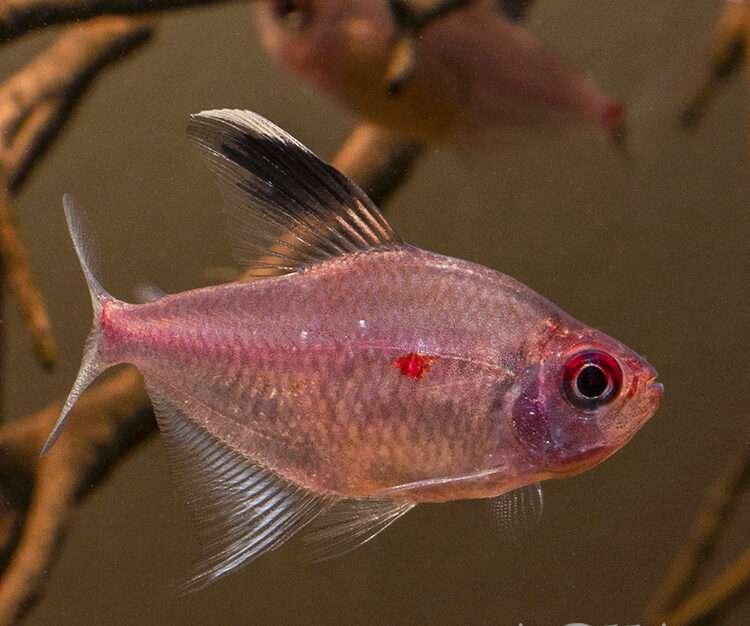
Size
Three inches is the maximum length.
Physical Characteristics and Behavior
Bleeding-Heart tetras get its name from the red heart-shaped markings that can be seen on both sides of the fish just before the ventral fins and near to both gills. These cute patterns might appear at first glance to show hearts, but if you look closely, you’ll notice that they don’t. They are joyful, cheerful, and full of energy, much like the colorful environment in which they were born.
Habitat
The following circumstances must exist for Bleeding-Heart tetras to survive: The water should be between 72 and 80 degrees Fahrenheit (this species thrives around 75 degrees); the pH should be between 6.0 and 6.5 (slightly acidic); and the hardness should range between 3 and 12 dGH.
Keeping as Pet

- Care
Bleeding heart tetra are a species that is easy for beginners to take care of. They are quite versatile and can survive in a tank that is kept clean. Of course, you still need to adhere to some crucial care instructions! The bleeding heart tetra shares the same preferences as other fish. To maintain the happiness and health of your fish, follow these recommendations.
- Tank Size
20 gallons should be the absolute minimum tank size you take into consideration for bleeding heart tetras. You can easily keep four to six fish in an aquarium this size. The size of your tank will have a significant effect on the health of the fish. You run the danger of stressing out your fish and increasing ammonia levels if the tank is too tiny.
- Parameters for water
When it comes to caring for bleeding heart tetras, high-quality water is essential. Fortunately, getting there isn’t too tough. These freshwater fish can survive in typical tropical circumstances thanks to their extreme hardiness. They’re such a beginner-friendly species in part because of this! These tetras live in slow-moving, wood- and leaf-debris-filled rivers in the wild. Due to tannins released from leaves, the water is typically tinged with tea. You don’t have to go as far as to colour the aquarium water.
The water specifications that you must supply are as follows:
Water should be between 72°F and 80°F (ideally, 75°F).
pH ranges from 6.0 to 6.5 (Slightly acidic)
4–8 KH water hardness
- Diet
It’s easy to feed bleeding heart tetras. These omnivorous and extremely opportunistic freshwater fish will take anything they can get! For routine feeding, a high-quality pellet or flake product is ideal. You can also offer live, freeze-dried, or frozen food, though. They happily eat brine shrimp, bloodworms, and daphnia as snacks.
- Tank companions
You shouldn’t have any issues if you maintain harmony. If you want to build a communal tank, these are some good tank companions to test out:
- Danios (attempt the celestial pearl) (try the celestial pearl)
- Rasboras
- Barb of Odessa, Kuhli loach
- Catfish cory
- Clown fish
- Dojo loach cherry barb
Table





